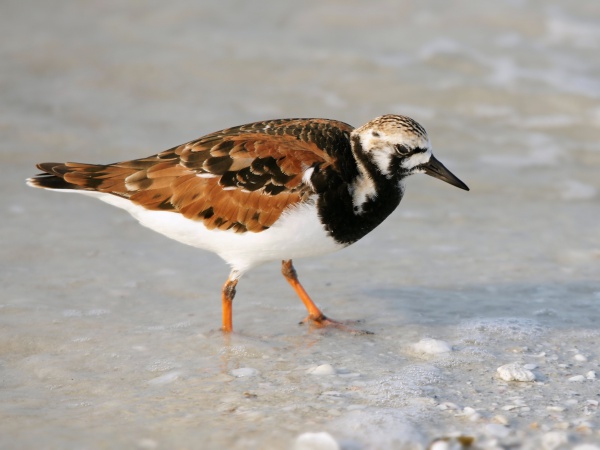Facts About Ruddy turnstone
The ruddy turnstone is an intriguing small bird from the sandpiper family, renowned for its striking black-and-white plumage that resembles a harlequin's costume. This petite wader is a globetrotter, breeding in the northern regions of Europe, Asia, and North America, and wintering along coastlines worldwide.
In terms of appearance, breeding ruddy turnstones display reddish-brown upper parts adorned with black markings, making them easily recognizable. Their feeding habits are equally captivating; they primarily forage for invertebrates—such as insects, crustaceans, mollusks, and worms—by flipping over stones to reveal hidden prey.
During the breeding season, these birds inhabit northern coastal areas, with subspecies found in Alaska, Canada, Greenland, and northern Europe. As winter approaches, they migrate to warmer coastal regions, extending from Washington down to South America in the Americas, and from western Europe to the Mediterranean coasts. They are also commonly seen in Africa, Asia, and various Pacific islands.
Ruddy turnstones are known for their versatile feeding strategies. They engage in activities such as overturning stones, digging, probing, and surface pecking. Remarkably, they can also prey on the eggs of other birds, using their bills to crack open the shells. These birds are quite territorial and can recognize each other through their unique plumage patterns. They thrive in a range of habitats, from the frigid Arctic to the warm tropics, and exhibit strong fidelity to their chosen wintering sites.
Regarding family life, ruddy turnstones are monogamous, often staying with the same partner for multiple breeding seasons. They nest on bare, stony, or rocky ground, laying between two to five eggs per clutch. The young are precocial, meaning they can leave the nest and begin feeding themselves shortly after hatching.
According to the IUCN, the ruddy turnstone population remains stable, with an estimated 449,000 individuals worldwide. Although they face some threats during migration and wintering, their extensive distribution and remote breeding locations contribute to their status as a common species.
